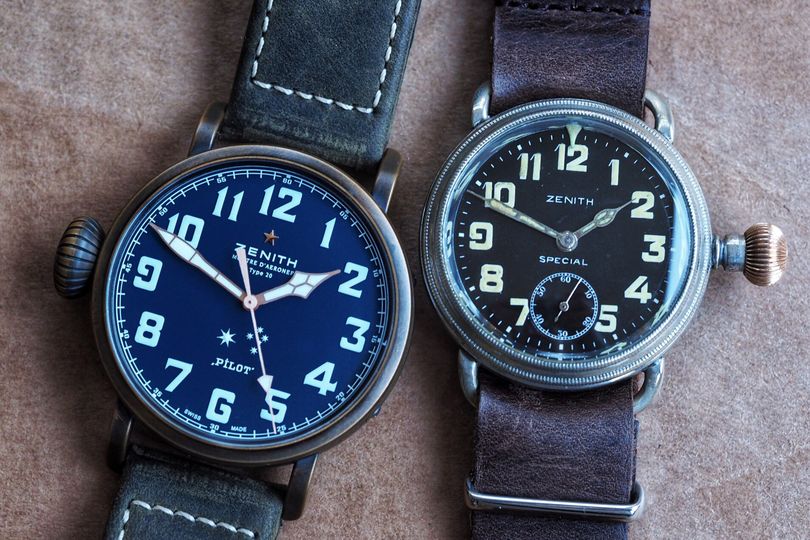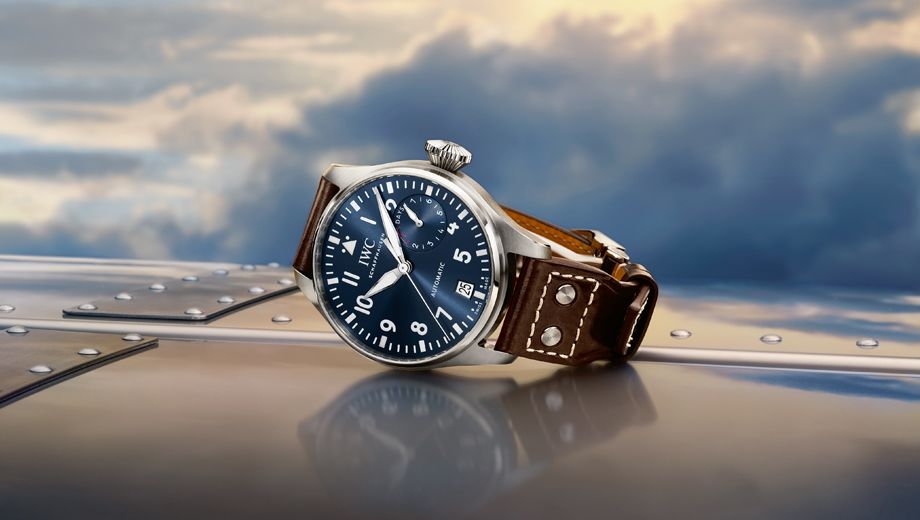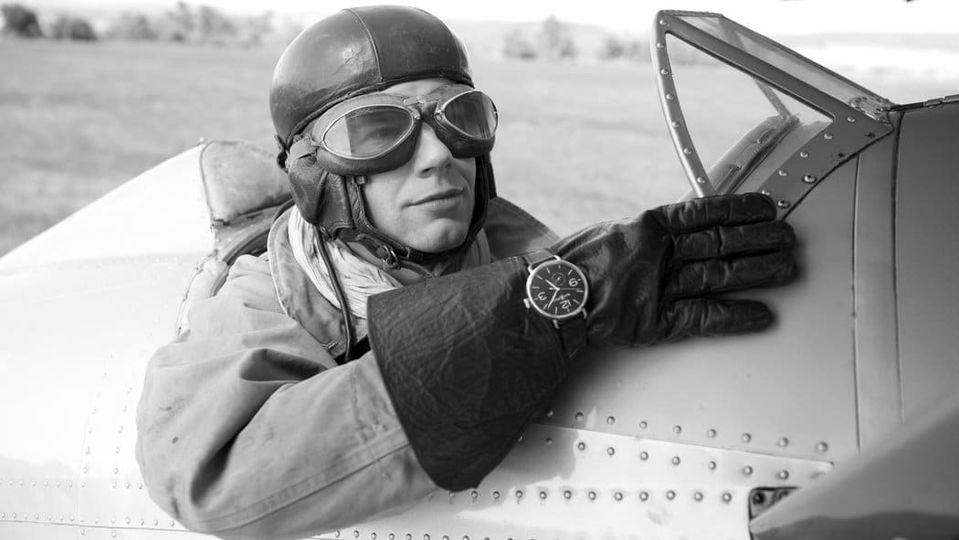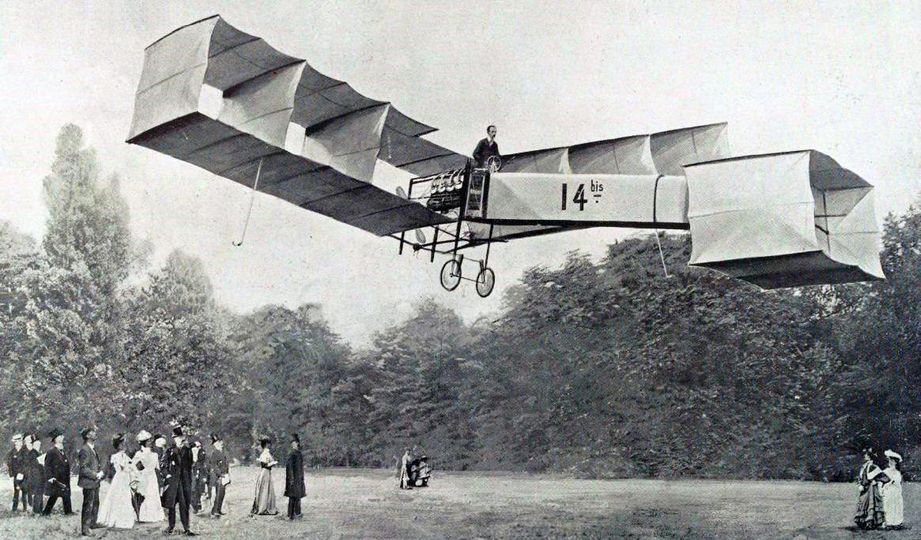Pilot's watches are among the most popular category of modern timepieces, even if most buyers are more likely to be sitting in a business class seat rather than behind the stick.
But this is no mere branding exercise: flight and wristwatches are linked by a common history and purpose going back over a century.
It all started with a Brazilian aviation pioneer named Alberto Santos-Dumont, who made the first public flight in a self-powered aircraft in Paris on 23 October 1906.
The Wright Brothers may have preceded him by three years, but their aircraft required headwinds or catapults to launch, but Santos-Dumont’s biplane with its box kite-like design took off under its own power.
Santos-Dumont was friends with Parisian watchmaker Louis Cartier at the time, and complained to his friend that he had trouble timing his flights with a pocket watch as he needed to keep both hands on the aircraft controls.
In response Cartier developed the Santos, the first pilot’s watch and one of the earliest known men’s wristwatches.
This was a square watch fitted with a strap to be worn on the wrist, a revolutionary concept at the time. Santos-Dumont’s celebrity helped popularise the watch.
Cartier has continued to produce the Santos ever since, and the design of today's Santos de Cartier (below) clearly celebrates that heritage.
Although iconic, the Santos isn’t what we would consider an aviation-styled watch by modern standards. The design needed some refinement before it would take the form of the pilot’s watch we know today.
The next landmark in the history of watches and aviation occurred in 1909. British news outlet The Daily Mail offered a £1,000 prize for the first crossing of the English Channel in a heavier-than-air aircraft: 27 miles of open water stretching to the horizon, a seemingly impossible task in this very early era of aviation.
Against all odds, a young Frenchman named Louis Blériot won this prize aboard the Blériot XI monoplane, with a Zenith watch strapped to his wrist.

The watch featured a black enamel dial, with large white Arabic numerals for high contrast and legibility, and an oversized “onion” shaped crown to make adjusting the watch easier while wearing pilot’s gloves.
Blériot became a celebrity, and his advocacy propelled both Zenith and its style of pilot’s watches into the public eye – and the aviator watch, as we know it today, was born.
Breitling Navitimer
Another watchmaker deeply associated with aviation is Breitling, who introduced the first wristwatch chronograph with an independent pusher to start and stop the timer in 1915.
This allowed pilots to time their flights with greater ease and accuracy than ever before. Breitling advanced this idea further with the introduction of the slide-rule bezel in 1941, allowing pilots to calculate things like fuel consumption, climbing speed and average speed.
First introduced in the Breitling Chronomat, the slide-rule bezel later found its way into a new collection that would become emblematic of the brand; the Breitling Navitimer, a chronograph designed for civil aviation pilots.
Flieger watches
During the same period in the Second World War, a new type of aviator watch arose in Germany; the Flieger (German for flyer) watch, also known as a B-Uhren (an abbreviation of Beobachtungs-uhren, literally “Observation watches”).
These timepieces were commissioned by the Luftwaffe and were manufactured by only five watchmakers: among them A. Lange & Söhne, Lacher & Company/Durowe (Laco), Walter Storz (Stowa) and International Watch Co. (IWC).
Flieger watches were huge, with 55mm black dials and white Arabic numerals which offered unmatched legibility. An upwards-pointing triangle or arrow at 12 o’clock helped pilots orient the watch during manoeuvres.
The watches came attached to very long, double-riveted leather straps, capable of fitting over a German pilot’s leather flight jacket.
All these elements – the triangle motif, double-riveted strap and large, legible dial – have worked their way into the modern DNA of many aviation watches.
The IWC Pilot series
After the war IWC supplied watches for Britain's air forces. In 1949 the company collaborated with movement manufacturer Jaeger-LeCoultre to make a watch which would meet the rigorous specifications set by the British Ministry of Defence.
The IWC Pilot Mark XI was the result, and was supplied to the RAF as well as Australia's RAAF and the Royal New Zealand Air Force.
Built to be tough, extremely accurate, and resistant to the magnetic fields present in a pilot’s cockpit, these watches embodied the concept of a “tool watch” for which aviation watches have become famous.
Rolex goes GMT
As flight became commercialised and public long-haul flights began to cross multiple time zones, demand rose for a watch which could track both local time and Greenwich Mean Time (GMT), the international civil time standard of that era.
Rolex stepped up to fill this demand with the Oyster Perpetual GMT Master, designed in collaboration with the Pan American Airways.
The model was launched in 1954 and featured a fourth “GMT” hand to indicate the time on a two-tone 24-hour bezel, representing day and night hours in GMT time.
Over the years new versions of the GMT Master evolved featuring bezels in Red/Black (“Coke”), Red/Blue (“Pepsi”), Black/ Blue (“Batman”), Brown (“Rootbeer”) or solid black colour schemes, each of which have become icons in their own right and seen countless homages and imitations.
Many other watchmakers have played their part in the century of aviation, but the above are some of the most genre-defining.
So the next time you come across the likes of a Breitling Navitimer with its slide-rule bezel, an IWC Mark XVIII, a Rolex GMT Master II, or even a Cartier Santos, know that these are watches with genuine history which helped define not only watchmaking, but also aviation.










04 Dec 2013
Total posts 154
Chap I know flew Vampires, Sabres and Mirages in the RAAF and always had an IWC Mk XI or a similar Jaeger Lecoultre. They were cycled regularly - taken in for tuning and calibration, and re-issued. Not sure if he got to take them home - in any event they always remained RAAF property.
17 Jul 2018
Total posts 1
Jason - image for the Zenith is incorrect. Let me know if you need it - I can provide the image of the model Louis Bleriot wore as well as its current iteration.
10 Jul 2018
Total posts 3
Hi 1esskay, thanks for the catch. The black & white pilot shot underneath the Zenith paragraph isn't of Bleriot, as you noted; this was meant just as a flavour image. If you do have actual images of Bleriot's Zenith watch I'd be happy to get the article amended though! My email is in my bio at the end of the article :)
Hi Guest, join in the discussion on How 'aviator watches' took flight